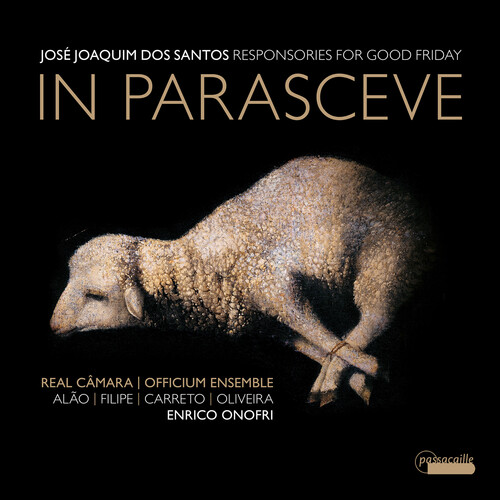Show results for
Deals
- 4K Ultra HD Sale
- Action Sale
- Alternative Rock Sale
- Anime sale
- Award Winners Sale
- Bear Family Sale
- Blu ray Sale
- Blues on Sale
- British Sale
- Classical Music Sale
- Comedy Music Sale
- Comedy Sale
- Country Sale
- Criterion Sale
- Electronic Music sale
- Fantasy Film and TV
- Folk Music Sale
- Hard Rock and Metal Sale
- Horror Sci fi Sale
- Jazz Sale
- Kids and Family Music sale
- Kids and Family Sale
- Metal Sale
- Music Video Sale
- Musicals on Sale
- Mystery Sale
- Naxos Label Sale
- Page to Screen Sale
- Paramount Sale
- Pop and Power Pop
- Rap and Hip Hop Sale
- Reggae Sale
- Rock and Pop Sale
- Rock Legends
- Soul Music Sale
- TV Sale
- TV Sale
- Vinyl on Sale
- War Films and Westerns on Sale

In Parasceve - Good Friday Responsories
- Format: CD
- Release Date: 6/6/2025

In Parasceve - Good Friday Responsories
- Format: CD
- Release Date: 6/6/2025
- Composers: Jose Joaquim Dos Santos
- Label: Passacaille
- UPC: 5425004841551
- Item #: 2710628X
- Genre: Classical Artists
- Release Date: 6/6/2025
Product Notes
In the latter half of the 18th century, the Portuguese court saw the emergence of distinctive instrumental practices within it's sacred repertoire. Among these innovations were works composed for Holy Week that featured concertante violas but conspicuously omitted violins. This unusual instrumentation became a hallmark not only of daily court music but also of Portuguese music as a whole. This tradition likely reflects the profound influence of Neapolitan music in Portugal, aligning with a broader practice of incorporating solo bass instruments to enhance the solemnity of liturgical occasions, such as Holy Week and All Souls' Day. One of the most notable composers of the Patriarchal Chapel to embrace this style was Jose Joaquim dos Santos. Born in obidos in 1747, he entered the Patriarchal Seminary in 1754, studying under the renowned Neapolitan composer David Perez. By 1763, Santos had joined the seminary's teaching staff, where he remained a central figure until his death in 1801. His work exemplifies the rich interplay of local tradition and Neapolitan influence.


